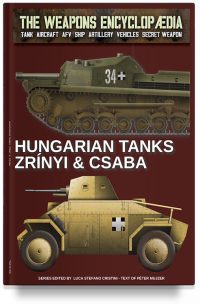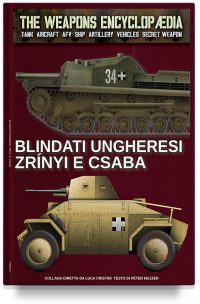-

L’impero si salva al 90°
- €4,99
- V Secolo d.C. L'Impero Romano d'Occidente è in grave crisi, ma siamo proprio certi che il declino sia ineluttabile? Ecco tre modi con cui l'autore immagina una sua sopravvivenza. Il primo racconto ci porta in Egitto all'epoca della filosofa neoplatonica Ipazia, che si salva dall'orribile morte ad opera dei monaci cristiani e che promuove una rinascita spirituale e materiale dell'ideale ellenistico in tutta l'Africa settentrionale, mentre Alessandria diviene il rifugio di gran parte della vecchia classe senatoria romana. La seconda…
-

L’ultima Crociata
- €4,99
- La storia si svolge in un’improbabile Italia del futuro in cui, al centro del tricolore campeggia una mezzaluna. Il protagonista del romanzo è un giovane calciatore che si trova improvvisamente alla guida di un “Nuovo Risorgimento”. Molte vicende si svolgono attorno agli stadi ma lo sport ha un ruolo di secondo piano. L’Autore ha solo voluto solo mettere in risalto che tanti si ricordano d’essere italiani solo quando la Nazionale vince. I personaggi sono immaginari. Ogni riferimento a persone esistite…
-
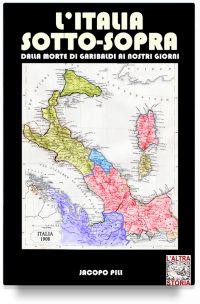
L’Italia sotto-sopra
- €4,99
- 1860: Giuseppe Garibaldi muore nella battaglia di Milazzo. L'Italia unita rimane una fantasia, con il Regno delle Due Sicilie ed il Regno d'Italia limitato al nord prendono strade diverse. Ma la storia non cambia solo per l'Italia: tutta l'Europa risente delle conseguenze della morte di un solo uomo, e le lotte per l'unificazione non sono finite... Questo racconto parla della sanguinosa storia dei due Regni italiani durante il corso del diciannovesimo e ventesimo secolo, dalle guerre della mancata Unità, alle…
-

Tempus
- €4,99
- Nell’anno 2010 l’Impero Romano si estende dal Marocco alla Siberia. L’America si chiama Atlantide ed è abitata dai Greci. In un laboratorio segreto, vicino a Roma, scienziati greci e romani stanno studiando una nuova invenzione che potrebbe permettere di andare indietro nel passato. A Tuscolo si ritrovano Leo, Stan e Omar, che raccontano la loro storia. Leo e Stan scoprono di avere vissuto due volte e di essere stati innamorati per secoli della stessa donna con cui hanno cambiato il…
-

Il muro di Milano
- €4,99
- Anno 1990: nella Repubblica Popolare di Padania, ancora occupata dall'Armata Rossa, i servizi segreti italiani portano avanti “l'Operazione Garibaldi” che dovrebbe portare all'unificazione dell’Italia settentrionale comunista con la Repubblica Federale Italiana del centro sud. Il Muro di Milano sta per crollare ma la tensione tra Occidente e i paesi arabi rischia di trasformarsi in un nuovo grande conflitto. La principessa Costanza di Sicilia ha un piano per riportare la pace nel Mediterraneo. In suo aiuto giunge Karim Santoro, agente dei…
-
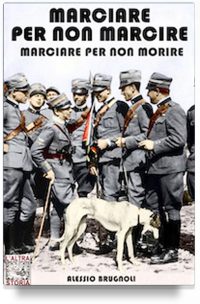
Marciare per non marcire, marciare per non morire
- €4,99
- Nell'Italia che, dopo la morte del dittatore D'Annunzio e il lento ritorno alla democrazia, ha cercato di rimanere neutrale nella nuova guerra europea, come un fulmine a ciel sereno giunge la notizia che i tedeschi stanno preparando la sua invasione, nel tentativo di portare la guerra nel Mediterraneo e costringere la Gran Bretagna alla pace. Riusciranno politici impegnati a pugnalarsi alle spalle e generali troppo umani a impedire la catastrofe? Geniale ed intrigante racconto ucronico di un mago del settore,…
-

1814 – Italia napoleonica
- €4,99
- Napoleone rappresentò per l'Italia un vero e proprio tornado. In 25 anni la carta politica dello Stivale fu sparigliata fu volte: furono creati e cancellati Stati, i confini spostati vorticosamente, le monarchie diventare repubbbliche e poi ancora monarchie, parte della Penisola annessa direttamente all'Impero Francese. Tutto questo "movimento" rappresenta un terreno fertilissimo per gli appassionati di ucronie. L'autore di questa raccolta si concentra in particolare sulla seconda fase dell'avventura napoleonica in Italia: quella del crollo dell'effimero Impero di Bonaparte. Siamo…
-

Italia/Spagna – Storia invertita di due nazioni dal 1936 a oggi
- €4,99
- In questa ucronia s'immagina un'inversione dei destini politici di Italia e Spagna nel Novecento. La prima, libera da Mussolini proclamando la neutralità alla Seconda Guerra Mondiale, la seconda si avvicina ulteriormente ai nazisti dopo la Guerra Civile Spagnola con la vittoria nazionalista ed entra in guerra al fianco di questi nel 1940 incontrando gli stessi disastri e quasi le stesse disavventure capitate all'Italia. Mentre nel secondo dopoguerra la Spagna tornata repubblicana si ricostruisce e ascende come potenza industriale, l'Italia rimane…
-

Il Duce ha vinto, anzi no ma non è morto…
- €4,99
- Ucronia e Seconda Guerra Mondiale, un argomento certamente già "arato" sia dalla letteratura che dal cinema. E tuttavia la WWII per la sua complessità e per la ricchezza delle informazioni disponibili presenta spunti quasi infiniti per gli amanti del genere "storia alternativa". L'autore di questa trilogia ucronica esplora in particolare alcune scenari della partecipazione italiana al conflitto e della guerra civile del 1943-1945. Si parte da un racconto di carattere generale, una diversa e più efficace strategia militare del nostro…
-
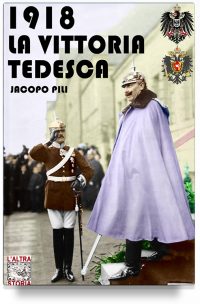
1918 La vittoria tedesca
- €4,99
- 1914-1918 La guerra vinta dagli Imperi centrali Poteva la Germania, e con lei gli Imperi Centrali, vincere la Grande Guerra? Una possibile risposta a questa domanda è contenuta nelle pagine di questo libro. L'ipotesi fondamentale è una diversa strategia implementata dallo Stato Maggiore germanico nel secondo anno del conflitto: una strategia che volge il proprio sguardo verso le grandi pianure e la guerra di movimento dell'Est invece che sulle trincee e i massacri dell'Ovest. Da questa ipotesi si dipanano sempre…
-

The Axis Forces 25
- €8,99
- In this issue: we start with the history of the Wallonie assault brigade, from its formation to its use on the Ukranian and Estonian fronts. Following that is the biography of a Latvian volunteer, Woldemars Veiss, one of the bravest officers, decorated with the Knight’s Cross. We continue with the employment of the Toteknkopf division in the Demyansk pocket, between January and March 1942. We conclude with a long, but hopefully interesting article by our friend Hugh Page Taylor on…
-
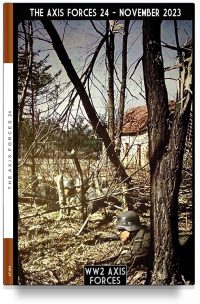
The Axis Forces 24
- €8,99
- In this number: a long and interesting work on the use of the Hitler Youth Division on the Normandy front, in the initial phases of the bloody fighting that raged on French soil in the summer of 1944. An article follows on the Italian light tanks, much maligned by official historiography, but which were used on all war fronts, especially as reconnaissance vehicles. We continue with the history of the Totenkopf division, this time dealing with the period between October…
-
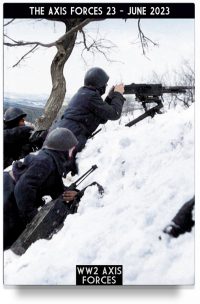
The Axis Forces 23
- €8,99
- We begin with a long and interesting work on the use of the Totenkopf division during the Zitadelle operation launched by the Germans to eliminate the dangerous Kursk salient. Then follows the biography of Fritz von Scholz, an officer who first served in the Wiking division and then commanded the Nordland division. We continue with the formation and use of the Italian Army on the Eastern front, a topic that we will also deal with in the upcoming issues. Speaking…
-
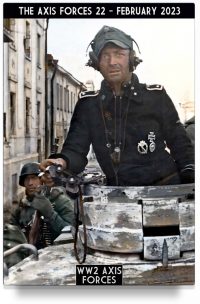
The Axis Forces 22
- €8,99
- The Axis Forces 22 In this number: We begin with a long and interesting work on the employment of the Totenkopf division during the counter-offensive on the Ukrainian front between February and March 1943, following the SS-Panzer-Korps. This is followed by the biography of Egon Christophersen, a Danish non-commissioned officer first in the Wiking division and then in the Nordland division, who distinguished himself during the fighting on the Narva front, earning himself the Knight’s Cross. We continue with an…
-
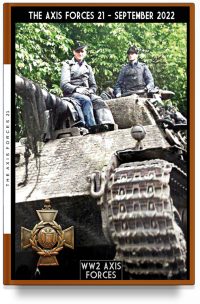
The Axis Forces 21
- €8,99
- The Axis Forces 21 In this issue: we begin with the deployment of the Wiking Division in the Caucasus regions in the summer of 1942. Following is the biography of Bruno Hinz, an SS officer, who served first in the Wiking Division and then in the Götz von Berlichingen. We continue with the employment of the Italian volunteers who served in the Waffen SS on the Nettuno front in the spring of 1944. We then return to talk about the Polizei…
-

The Axis Forces 20
- €8,99
- In this issue: we start with the history of the Wallonie assault brigade, from its formation to its use on the Ukranian and Estonian fronts. Following that is the biography of a Latvian volunteer, Woldemars Veiss, one of the bravest officers, decorated with the Knight's Cross. We continue with the employment of the Toteknkopf division in the Demyansk pocket, between January and March 1942. We conclude with a long, but hopefully interesting article by our friend Hugh Page Taylor on…
-

The Axis Forces 19
- €8,99
- We begin with the deployment of the Polizei Division on the Eastern Front, in the early summer of 1941. For the biographies, this time we address one of the best known and most famous officers of the Waffen SS, Gerd Bremer, who served first in the Leibstandarte Division and then in the Hitlerjugend. We continue with the third part of our study on Frikorps Danmark, as always accompanied by numerous and interesting photographs. The second part of the article dedicated…
-

The Axis Forces 18
- €8,99
- Eighty years ago, exactly in the summer of 1941, on June 22, 1941, German military forces invaded the Soviet Union, beginning one of the largest military campaigns of the entire Second World War. We will start from this issue of the magazine to retrace the fundamental stages of the war on the Eastern front, dealing, as always, mainly with foreign voluntary units. Let’s now analyze the contents of this new issue of the magazine. Let’s start with the history of…
-
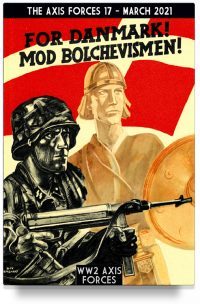
The Axis Forces 17
- €8,99
- Let's start with the formation of the SS Division Nord in 1941, on the eve of its employment on the Finnish front. Following is the biography of Josef Rollecke, a man decorated with the Knight's Cross, of the 3. SS-Panzer Division 'Totenkopf'. We continue with the first part of an in-depth study on the history of Frikorps Danmark, the Danish volunteer formation. Another biography dedicated to Georg Keppler, commanding officer of the Waffen-SS follows. The study dedicated to Italians decorated…
-
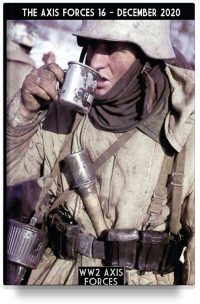
The Axis Forces 16
- €8,99
- Axis Force 16 The contents of this new issue: let's start with the use of the SS cavalry units on the Polish front between 1939 and 1941, mainly engaged as security forces and in the anti-partisan struggle. Following is the biography of Herbert-Otto Gille, one of the most representative figures of the Waffen-SS, regimental, division and army corps commander. We continue with the fourth part of the article dedicated to the employment of the Cossacks in the German armed forces.…
-
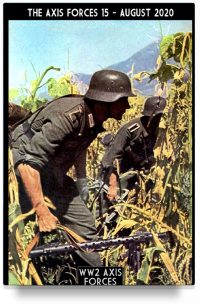
The Axis Forces 15
- €8,99
- The contents of this new issue: the Totenkopf-Division on the Western Front (May-June 1940), General der Waffen-SS Matthias Kleinheisterkamp, Hitler's Cossacks (part 3), Hans Siegel, Knight’s Cross Holder of the 12. SS-Panzer Division, SS-Panzergrenadier-Division Wiking on the Manytsch Front and the Panzerschreck. By Massimiliano Afiero, 80 pages English text
-
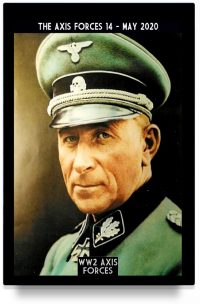
The Axis Forces 14
- €8,99
- In this issue we start with an article dedicated to the use of the SS Totenkopf division on the Western Front in the spring of 1940. This is followed by the history of the bersaglieri (light infantry) units of the Italian Social Republic, in particular of the "Italia Division" with many unpublished photos. The biography of this issue is dedicated to one of the most important characters in the history of Waffen SS, Paul Hasser. We continue with the second…
-
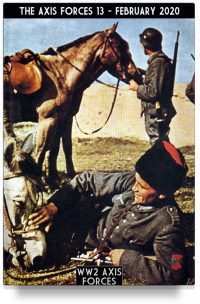
The Axis Forces 13
- €8,99
- In this issue we start with an article dedicated to the use of the SS Prinz Eugen division during the 'Schwarz' operation, conducted on the Balkan front in May 1943. This is followed by the biography of Philipp Theiss, extracted from the new book by our Peter Mooney. We continue with the first part of the article dedicated to the recruitment of the Cossacks into the German armed forces and with the second part of the monumental work dedicated to…
-
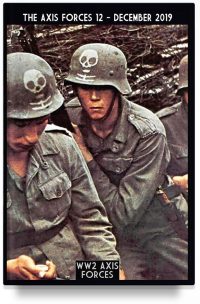
The Axis Forces 12
- €8,99
- In this issue we wanted to commemorate the 80th anniversary of both the German invasion of Poland and the Soviet invasion of Finland, two events that marked the beginning of World War II. In fact, analyzing the contents of this new issue, we initially find an article on the use of Totenkopf units in Poland in September 1939, a second article on the Soviet invasion of Finland. Then we find the biography of Karl Heinz-Boska by Peter Mooney, the history…
-
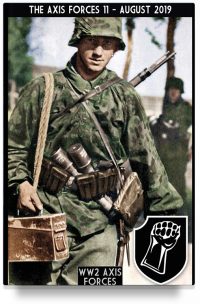
The Axis Forces 11
- €8,99
- We begin with with the article by P. Crippa, about the tanks of Mussolini, the armored division wanted by the Duce equipped with German vehicles. Following is the biography of Siegfried Brosow, one of the most famous and decorated officers of Waffen SS. We continue with an article about the employment of the Götz von Berlichingen division during the Mortain counteroffensive and another article on the employment of the Kampfgruppe Peiper on the Ukrainian front in 1943. Grégory Bouysse offers…
